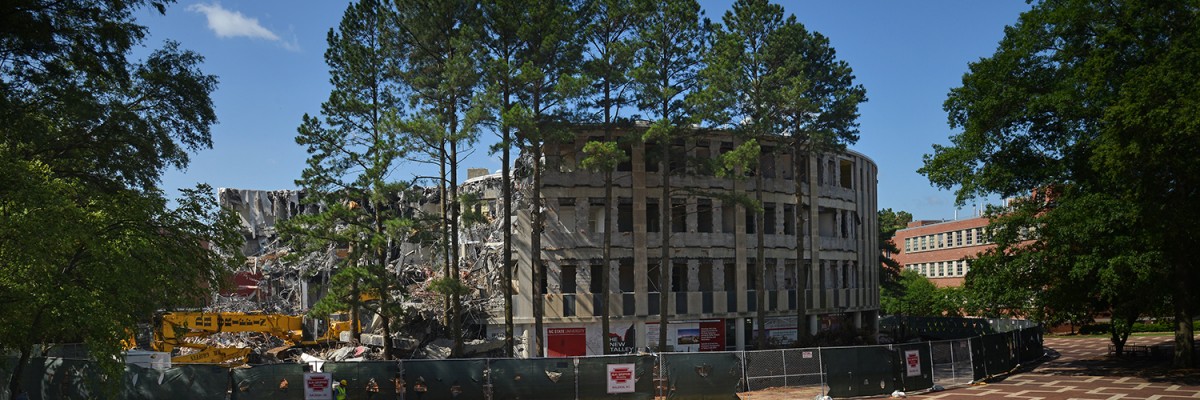Nearly All Of NC State’s Harrelson Hall Recycled, Salvaged

Harrelson Hall is gone, but most of its contents and building materials live on due to NC State’s successful recycling and reuse efforts.
During the 2016 deconstruction of Harrelson Hall, the university recycled or salvaged 95 percent of the building’s non-hazardous materials and contents. From steel and concrete to furniture and technology cables, most of Harrelson found a second useful life.
“Our goal was to keep as much of Harrelson from local landfills as possible,” said Liz Bowen, a University Sustainability Office program coordinator specializing in campus buildings. “We worked toward a 90 percent diversion rate and are so pleased to surpass that goal.”
Months before deconstruction, university personnel evaluated the condition of building resources, identifying items that could be reused on campus or in the community. Items such as select mechanical and fire safety systems, lighting fixtures, energy meters, instructional technology and carpet tiles were redistributed to other campus buildings.
Additional materials found new uses in the community, including furniture sold as university surplus, whiteboards that went to a new local high school and interior doors that a local fire department uses in training exercises.
“The salvaged material alone exceeded $300,000 of economic value that would have otherwise gone to landfill,” Bowen said.
Crews began deconstruction in summer 2016, taking several months to remove and transport 11.7 million pounds of building material to a local waste and recycling company for processing.
“There, materials are sorted and sent to various markets for reuse and recycling, depending on current market demand. Two of Harrelson’s primary materials — concrete and steel — are readily recyclable,” Bowen said.
What’s not included in the building’s waste diversion rate are hazardous materials such as asbestos, a common 1950s-era construction material that the university safely contained and disposed of according to federal and state laws.
Harrelson Hall opened in November 1961 as the nation’s first circular classroom building on a college campus. As instructional equipment and building codes modernized in the decades to follow, the building’s 109,000-square-foot circular design limited its functionality and accessibility, eventually making it too costly to renovate.
Future plans call for the former Harrelson site to host a new science classroom building, but for now the area is being landscaped into green space that’s expected to be completed in March.
- Categories: